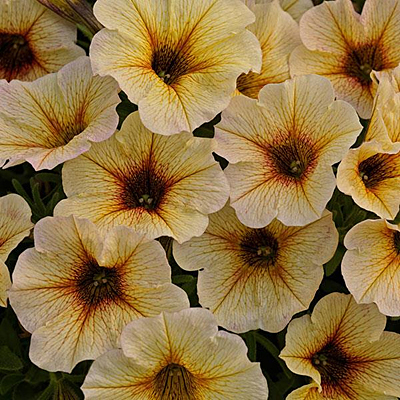

Grandiflora petunias have very large flowers and are best grown in containers or hanging baskets (because they are more susceptible to rain damage).They have smaller but more abundant flowers and are ideal for summer bedding or in a mixed border (because they are more tolerant to wet weather). Multiflora petunias are the most durable and prolific.Petunias are divided into different groups, mainly based on flower size: Their height can vary from 6 inches to 18 inches and they can spread along the ground anywhere from 18 inches to 4 feet. These colorful annuals can really add pop to a front lawn and are often used in borders, containers, hanging baskets or even as a seasonal groundcover. Some even have a slight fragrance. Petunias are treated as annuals in most areas, but can be grown as tender perennials in Zones 9 to 11. The flowers come in many colors and patterns, and bloom from spring until frost!
#Supercal petunia cinnamon how to#
See how to plant and take care of your petunias to keep them blooming. As with most annuals, they get leggy by midsummer, so you’ll want to prune the shoots back to about half their length. If they are to be used in a landscape application, you will need to establish them in a 4 inch pot or an 1801 before planting outside.Ĭurrent Availability 09-05-2022 (Week 36)Pretty petunias are one of the most popular flowers because of their exceptional blooms and long flowering period. These rooted starter plants will arrive ready to be transplanted in to your final container. Rooted Cuttings Cuttings vary in size between different plant families. Grow Petchoa in a cool environment of 50-55F night temperatures.A second pinch may be necessary depending on the size and shape of the final pot. Pinching is recommended 5-10 days after transplantation.Plant it directly in the middle of your pot.

If you are planting 4” pots, 1 plant per pot should be sufficient if you have enough time. Use a well-drained soil in your baskets and plant your starter plants deep, allowing the ellepot to be completely covered by the soil.

Pinching, growing in cool conditions, and bright light are the best ways to control Petchoa, but they are vigorous and may need PGRs. We recommend six inches for 4” pots and eighteen inches for 10” pots. Space pots adequately to allow for light penetration and airflow between foliage of adjacent pots. SpacingĬan be grown pot tight in an 1801. Pinching is recommended 5-10 days after transplantation. If you are not going to grow in a cold house, you can achieve faster production by 10-14 days. Our production schedule listed below takes into account colder temps. SuperCals can even take heavy frost, which makes them a good choice for cold-frame production. This will help keep the plant compact and encourage a well-toned growth without the use of PGRs. Grow Petchoa in a cool environment of 50-55F night temperatures.

Extra iron can be applied to promote good leaf color. General Growing Tips For Your Rooted Cutting Linerįor best results with Petchoa, we recommend using a constant feed program of 250-300 ppm N with an EC level between 1.5-2.0. Grow these plants for beds, hanging baskets, or as flowering cascaders in your combination pots. The early flowering time makes Petchoa a desirable addition to a spring program for those shoppers looking for color before your traditional plants are ready to sell. From the calibrachoa genes it gets vibrant colors that hold up well in harsh conditions. From the petunia side, Petchoas have strong roots and large flowers. Petchoa is a hybrid plant created by Sakata under the name SuperCal because it combines the best aspects of Petunias and Calibrachoas into one plant.


 0 kommentar(er)
0 kommentar(er)
